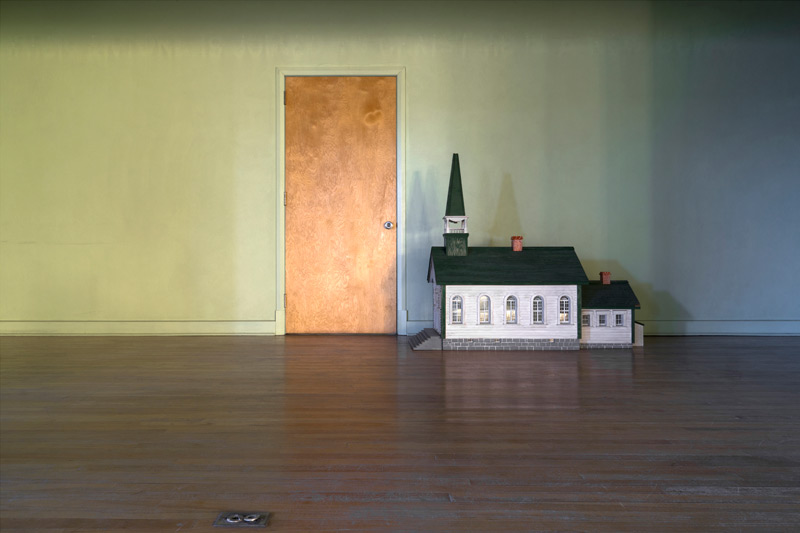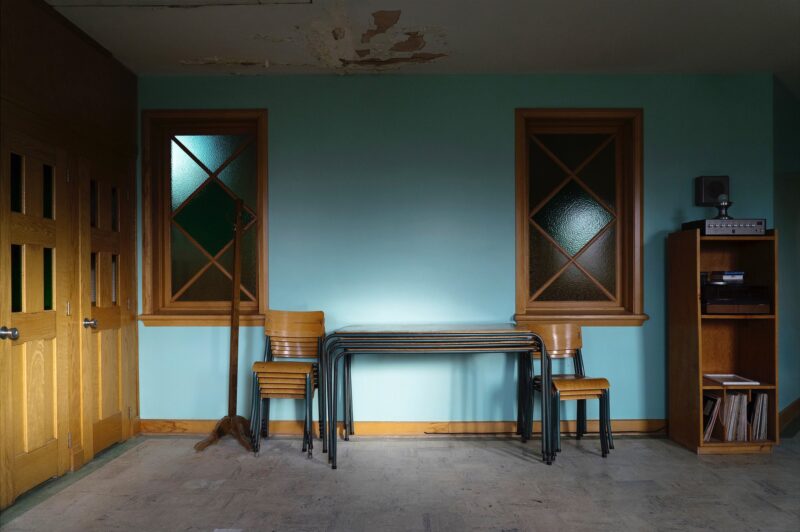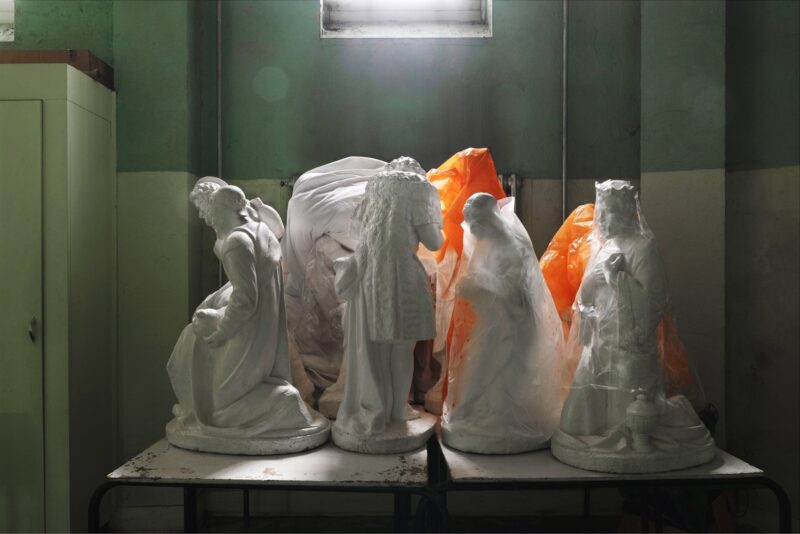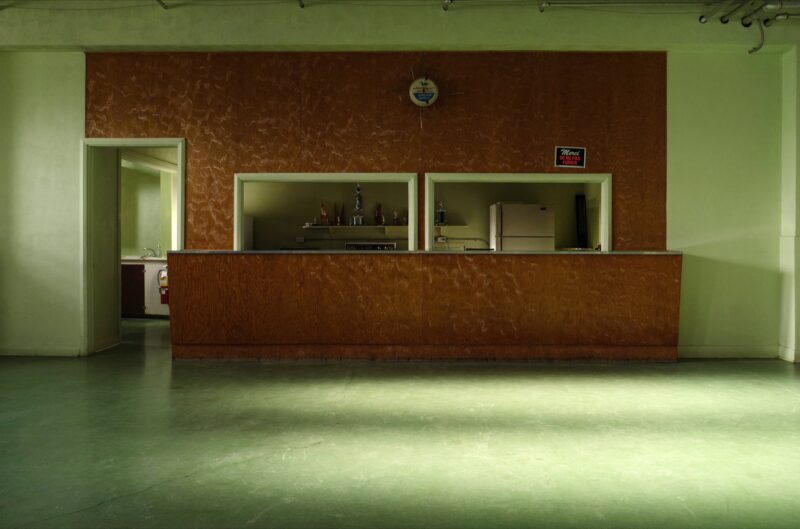[Summer 2021]
Judith Bellavance, Le goût de la durée
By Mona Hakim
Occurrence, espace d’art et d’essai contemporains, Montréal
15.09.2020 — 7.11.2020
On the walls of the smallest room in Galerie Occurrence are intriguing photographs of a bare, dingy hall. Captured by photographer Judith Bellavance, the basement of a Gaspé village church seems frozen in time. Bellavance is known for her poetic narratives created from collections of objects and traces of bodies, and so the choice to focus her lens on a closed space may seem surprising. When we take a close look, however, Le goût de la durée sheds additional and consequential light on the role played by memory, loss, and emotion in her work.
When she went to Douglastown for a first experience of working in thanatology, Bellavance was intrigued by the unique ambience of the huge church basement in which she was working. A charming town with Irish roots, Douglastown is situated in the heart of a region that today is coloured by new residents’ diverse customs and cultures – a transformation that contrasts with the conformism emanating from the village’s parish hall, with its community and multifunctional vocation.
When she went to Douglastown for a first experience of working in thanatology, Bellavance was intrigued by the unique ambience of the huge church basement in which she was working. A charming town with Irish roots, Douglastown is situated in the heart of a region that today is coloured by new residents’ diverse customs and cultures – a transformation that contrasts with the conformism emanating from the village’s parish hall, with its community and multifunctional vocation. By immersing herself in the spirit of the place, Bellavance sought to convey the values and customs of this small community by reconstructing a personal story through the marks of wear that the site bears and the emblematic objects that it contains. It is the guardian of a community’s precarious tradition and heritage, to which its members remain deeply attached.
It is through experiencing the place that this story first takes shape. From the stairwell to the sacristy, via the kitchen counter, the sink area, and the dining room, we enter the space of the gallery as if we were literally entering the parish hall, so methodical is the transposition. It is a strange climate, in which the worn surfaces of the walls, the ceiling, and even the floor are flagrant and clearly highlighted by Bellavance. Only the coat racks, stacks of chairs, and dishtowel placed on the lip of the sink suggest that human activity has taken place, or could occur, in these rudimentary, deserted spaces. And yet, as we pass in front of these enigmatic, otherworldly rooms, a surprising feeling of calm overtakes us. Certainly, the sibylline play of shadows and light, the bayleaf green that permeates the images, and the frontal views and tight shots in each picture contribute, along with their pictorial proclivities, to this impression of being enveloped. It is similar for the omnipresent – almost modernistic – geometry of shapes insistently underlined by the horizontal lines of the sink, the counter, and the trophy shelf, with the symmetrical planes of the furnishings making a sort of controlled, reassuring space.
In this way, Bellavance reveals another aspect of the threadbare setting – that of a well-scrubbed, orderly place, adorned with scrupulously preserved artefacts, attesting to the users’ propensity to “care for,” to sublimate the marks of time. By seeking to embody this desire for lastingness behind the signs of disintegration, Bellavance has stuck close to her subject of investigation by deciding on a form of magnification. It is a decision that bears fruit, executed through meticulous formal work based on a honed concern with detail and narrative construction.
The images are hung to great effect that does them full justice. This compelling spatial arrangement truly gives meaning and body to Bellavance’s intention. Large-format photographs line the walls, opening a dialogue among everyday things, religious objects, and the minimalist areas of the church basement. Interspersed are a candelabra, a spoon, a pencil holder, a hanger, trophies, a still life of dried flowers, a model of the church, a reliquary box, carefully wrapped figures from a creche scene, and a tabernacle covered with a finely embroidered white veil. Captured in isolation, in tight framings, these objects are captivating for the weight of their emotion and enigma. Above all, they reveal a place intended at once for ritual, contemplation, recreation, socialization, and expertise within a community determined to keep up a sense of belonging, even a breeding ground for identity.
Bellavance skilfully creates a balance between obsolescence and fulfilment, between loss and persistence. By infiltrating herself into the very flesh of things, she allows us to discover the marks of resistance induced by these traces of lives lived. At a time when we are pondering the fate of our patrimonial and religious architecture, Le goût de la durée sensitively and poetically provokes reflection on our relationship with history and memory, with a heritage just below the surface. Translated by Käthe Roth
Mona Hakim is a historian, art critic, and curator. Her research delves into various issues related to contemporary and current photographic practices. Her recent writings have appeared in the monographs Bertrand Carrière: Solstice (2020) and Isabelle Hayeur (2020). As a curator, she has organized more than twenty exhibitions.
[ See the magazine for the complete article and more images : Ciel variable 117 – SHIFTED ]





